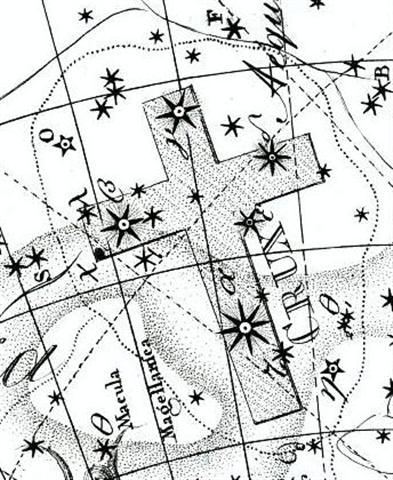The Tail of the Lion - Denebola (β Leonis) - coincides with tagata in Ga5-4:
The 4th Rei is a special case and its signs evidently indicate a dark unlucky time. There are 100 days from September 12 to the northern winter solstice. ... Interestingly, since another meaning of shi is 'death', the number 4 is considered unlucky. (For example, the floor numbering in hotels sometimes jumps mysteriously from 3 to 5; it's also considered unlucky to give four of something as a present.) ... 111 could imply next position is the unlucky 4th. The manzil name Dschuba probably refers to the star Dschubba (δ Scorpii), which at the time of G was due to rise in November 18 (322) or 186 days counted from the beginning of the manzil calendar (322 - 136 = 186). The idea could be to indicate the end of summer ('the tail of the Lion'). The 5th Rei is 180 days from 'March 21 (and 260 days counted from 'January 1):
South of the equator September is a spring month and the bird in Ga5-8 is laying an egg. The preceding π glyph is 4 * 29½ = 118 days from Gb8-30 (and 'May 24).
Autumn equinox (north of the equator) is not in day 21 but in September 22. September means the 7th month and 7 combined with 22 in a way is expressing the reverse of π (= 22 / 7). Perhaps we should imagine a door of entrance (for Sun). From September 22 to the end of the year there are 100 days. The Julian calendar introduced in 46 B.C. by Caesar changed the earlier 355 day long regular calendar by increasing the length of 7 of the months:
"The ordinary year in the previous Roman calendar consisted of 12 months, for a total of 355 days. In addition, a 27-day intercalary month, the Mensis Intercalaris, was sometimes inserted between February and March. This intercalary month was formed by inserting 22 days after the first 23 or 24 days of February; the last five days of February, which counted down toward the start of March, became the last five days of Intercalaris. The net effect was to add 22 or 23 days to the year, forming an intercalary year of 377 or 378 days." (Wikipedia)
272 = 2 * 136.This is the only instance when the day number of the Gregorian calendar is twice that of the day number of the manzil system. 51 * 8 = 408 possibly alludes to glyph number 408:
472 - 192 = 280 (= 40 weeks). The glyph type vero in Ga5-17 presumably indicates the 'spear' which 'kills' Old Sun. Such a 'death' is only temporary and like a branch of Mimosa (rau hei) Sun will quickly revive again. Day number 136 + 1 in the manzil system coincided with the heliacal rising of the star Mimosa in the Southern Cross.
... The Sensitive plant (Mimosa pudica L.) is a creeping annual or perennial herb often grown for its curiosity value: the compound leaves fold inward and droop when touched, re-opening within minutes. Mimosa pudica is native to Brazil, but is now a pantropical weed. Other names given to this curious plant are Humble plant, TickleMe plant, Shame plant, Sleeping Grass, Prayer plant, Touch-me-not, Makahiya (Philippines, meaning 'shy'), Mori Vivi (West Indies), mate-loi (false death) (Tonga) ... In the evening the leaflets will fold together and the whole leaf droops downward. It then re-opens at sunrise ... The possible allusion to tagata in Gb6-25 - the day before Rogo - points at the resemblance with how Sun returns at spring equinox north of the equator. If the Sun year is counted as 260 days long then his return in spring south of the equator at the heliacal rise of Mimosa (β Crucis) could mark the halfway station (because the glyph number is 130).
Unlike Hevelius (who saw the figures as they appeared from the outside of the star globe) Mimosa is above depicted at what looks like the left arm of Crux. But we have to read the picture (and the modern star charts) as the sight from inside the star globe, and then it will be the facial side of Crux which is looking down on us, with Mimosa at the right arm (which surely is the right side where 'light' is). Only 5 days remained to 13h, although October 8 (as in 108 or as in 88) could have been a more important date. This is where the manzil Assarfa was beginning (and 52 weeks = 364 days):
Neither Azzubra nor Assarfa is connected with any star according to the manzil structure I have copied from Wikipedia. I guess this means there is 'no ruling light', i.e. 'outside the regular year'. There are 52 manzil days without any ruling star:
131 + 38 + 73 + 71 = 313. | |||||||||||||||||||||||||||||||||||||||||||||||||||||||||||||||||||||||||||||||||||||||||||||||||||||||||||||||||||||||||||||||||||||||||||||||||||||||||||||||||||||||||||||||||||||||||||||||||||||||||||||||||||||||||||||||||||||||||||||||||||||||||||||||||||||||||||||||||||||||||||||||||||



















